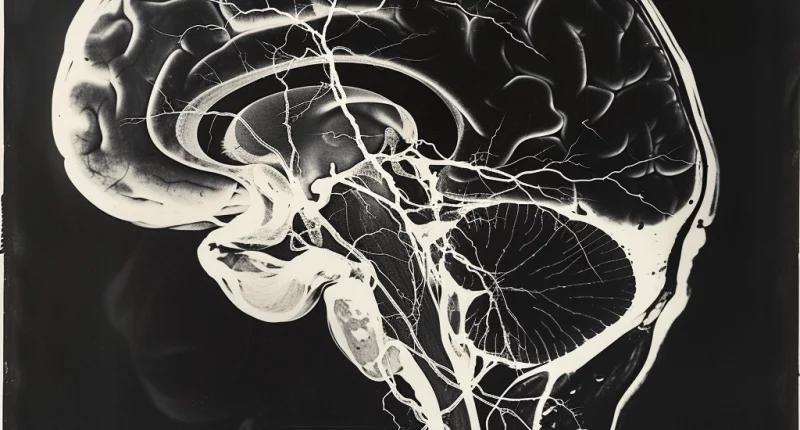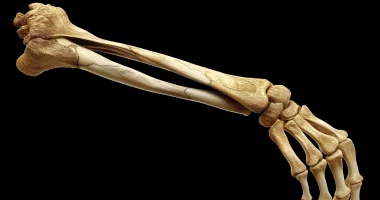Intracranial atherosclerotic stenosis (ICAS)
What is atherosclerosis of intracranial vessels?
The disease atherosclerosis of cerebral vessels is a common chronic pathology in the practice of neurologists. With atherosclerosis, arteries are affected. Cholesterol deposits, called “atheromatous plaques” form on their inner surface. Over time, these deposits thicken (sclerosis) and calcify, leading to severe deformation and lumen narrowing.
Atherosclerosis of cerebral vessels causes a gradual decrease in blood flow and prevents the flow of nutrients to the nerve tissue. When plaques and thrombi close the vessel’s lumen entirely (so-called occlusion), necrosis (infarction) of certain parts of the brain occurs.
The main symptoms of the disease are
In most cases, in the initial stages, the pathology is asymptomatic or asymptomatic, and characteristic manifestations are observed at later stages when the vascular lumen is narrowing by 50% or more. Such signs can suspect the presence of atherosclerosis of the cerebral cortex vessels:
- headaches;
- dizziness;
- tinnitus;
- impaired memory, attention span, thinking speed;
- decreased performance;
- increased fatigue.
If the above symptoms appear, it is worth seeing a doctor to rule out the presence of such a disease as atherosclerosis.
The faster the patient’s symptoms progress, the greater the severity of atherosclerosis of the cerebral vessels. At late stages, irreversible structural degeneration of blood vessels occurs when conservative treatment is no longer effective. Therefore, a preventive approach to the disease and early referral to a doctor is critical.
Reasons
The exact causes of the disease have not yet been established, although scientists have proposed several theories that include chronic vascular inflammation, micro-damage to the endothelium, metabolic disorders, and other mechanisms.
The risk factors for the disease are now clearly established:
- dyslipidemia (hereditary or acquired);
- arterial hypertension;
- overweight;
- diabetes mellitus and other metabolic pathologies;
- hypodynamia;
- bad habits;
- chronic stress.
Atherosclerosis of cerebral vessels occurs more often in men after 70. In addition to age and sex, aggravated heredity is also a non-modifiable risk factor.
Diagnosis
Comprehensive diagnosis of atherosclerosis of large vessels of the brain by experienced neurologists using modern equipment and techniques is offered for diagnosis. New diagnostic devices allow us to detect the problem quickly and as accurately as possible to start treatment as soon as possible.
The examination begins with an initial consultation with a neurologist, during which the doctor:
- will listen to the patient’s complaints, perform a physical examination, and determine the neurologic status;
- will refer for laboratory and instrumental tests according to the suspected problem;
- If necessary, refer for additional examination to other clinic specialists – cardiologist, therapist, endocrinologist.
Atherosclerosis of the vessels of the head requires a set of tests performed in the clinic’s own laboratory. Standard list of diagnostic measures:
- clinical blood work;
- coagulogram – determination of fibrinogen, prothrombin time, ACTH, D-dimer, and thrombin time;
- blood lipid profile – determination of total cholesterol, triglycerides, different classes of lipoproteins, and atherogenicity index.
Instrumental diagnosis of the disease requires ultrasound Doppler ultrasonography of the vessels of the head and neck, CT or MRI of the cerebral vessels, and angiography of cerebral vessels.
Treatment
Thanks to a comprehensive approach, coronary atherosclerosis in the brain can be successfully controlled, and the development of its life-threatening complications can be prevented. The treatment program includes non-medication, medication, and surgical methods of treatment.
The key to successful correction of the disease is proper nutrition. Specialists will select a diet that provides the necessary vitamins and nutrients. The diet will limit the content of fats of vegetable and animal origin to control weight and eliminate the phenomena of dyslipidemia. Dietary therapy is supplemented with physical therapy.
For all patients with atherosclerosis, doctors prescribe drug therapy. It is aimed at controlling the disease’s development and progression, which helps reduce cardiovascular risk indicators. For this purpose, such drugs are used according to indications:
- hypolipidemic – statins, fibrates, omega-3 fatty acids;
- hypotensive – beta-blockers, diuretics, ACE inhibitors, calcium channel blockers;
- hypoglycemic (in the presence of diabetes mellitus, which aggravates the course of atherosclerosis);
- means to improve cerebral blood flow and normalize energy supply to the brain.
Surgical treatment is indicated if the lumen of the cerebral arteries is narrowed by more than 75% if there is a history of stroke or repeated transient ischemic attacks. For example, such patients may undergo bypass surgery to bypass blood flow or endarterectomy to remove atherosclerotic plaques from the vessels.
All these treatment options are available in more than 600 hospitals worldwide (https://doctor.global/results/diseases/intracranial-atherosclerotic-stenosis-icas). For example, Endovascular stenting of cerebral vessels can be done in 28 clinics across Turkey for an approximate price of $11.2 K(https://doctor.global/results/asia/turkey/all-cities/all-specializations/procedures/endovascular-stenting-of-cerebral-vessels).
Prevention
To prevent atherosclerosis, you should:
- give up bad habits (especially smoking);
- adhere to a hypolipidemic diet (like the Mediterranean diet)
- maintain weight within the medically normal range;
- get regular exercise, walk more;
- have an annual checkup with your doctor.
Even at the initial stage of the disease, the vessels are significantly affected. A professional approach allows timely diagnosis of the disease to avoid irreversible disorders in the body.



